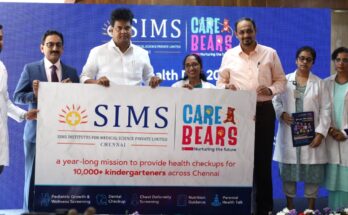Data from the large multinational Prospective, Urban Rural Epidemiological Study (PURE study)
Excess white rice intake linked to new onset of Type 2 Diabetes
Chennai, September 3rd, 2020: Data from the large multinational Prospective, Urban Rural Epidemiological Study (PURE study) just published online in the American Journal Diabetes Care, confirms an association between excess white rice intake with incident (new onset) type 2 diabetes.
Background of the study
The study was carried out on 132,373 participants in 21 countries. During the mean follow up of 9.5 years, 6129 individuals without diabetes at baseline developed incident (new onset) diabetes. In the overall cohort, higher intake of white rice, (> 450 gms per day compared to <150 gms per day) was associated with an increased risk of diabetes, (Hazards Ratio 1.20). However, the highest risk was seen in South Asia, (Hazard Ratio 1.65) where the rice intake was the highest, followed by other regions of the world, which included South East Asia, Middle East, South America, North America, Europe and Africa and China. The association of white rice with incident diab etes was strongly correlated to the amount of white rice consumed. In South Asia, where the consumption of rice was 630g/day, the highest risk was seen, followed by South East Asia where the mean consumption was 239 g/day. In China where the intake was around 200g/day, there was an association with diabetes, but it was not statistically significant.
Commenting on the results, Dr. Bhavadharini Balaji, first author of the paper, said that, “This is the largest study on white rice intake and incident diabetes ever done. It is also one of the first to be done across different cou ntries and confirms that white rice intake is one of the contributors to the diabetes epidemic in South Asia”.
Dr.V.Mohan, second author of the paper, who conceived the study, added, “We have earlier shown in the Chennai Urban Rural Epidemiological study (CURES study) that there was an association of white rice intake with prev alent diabetes. Further follow up of the CURES study over 10 years showed that excess white rice consumption was also associated with new onset (incident) diabetes in South India, particularly in Chennai. However, this study adds to the evidence because it was conducted on a much larger sample size, (n=132,2371 participants) across 21 countries and with a longer period of follow up. What comes out clear in the study is that, it is the amount of white rice consumed which is important. Clearly in India, the consumption of carbohydrate is too high in Southern and Eastern and North Eastern parts of the country it is mainly rice consumption which predo minates, while in the North and West of India, wheat consumption is more. Earlier studies from our group have shown that refined carbohydrates like white rice have a very high glycemic index which contributes to a high glycemic load in the diet. This is correlated not only with increased risk of diabetes, but also of metabolic synd rome including high serum triglyceride levels and low HDL cholesterol concentrations. These characteristics of what is called as the ‘Asian Indian phenotype’ or the ‘South Asian phenotype’ could be largely contributed at least partly by excess rice intake.
What is the solution?
The solution for this is to reduce the amount of rice consumed or to change to healthier varieties of rice like brown rice. Also, by including legumes and pulses like Bengal gram, green gram, black gram, rajma etc, the protein and fiber content in the diet can be increased and the glycemic load can be reduced. This would help in making the diet healthier. In India, almost 70 – 75% of the diet consumed consists of carbohydrates in the form of polished white rice or refined wheat. If this can be brought down to 45-50 % and the protein intake can be increased up to about 20% by including vegetable protein and if healthy fats like mono unsaturated fats are increased along with plenty of green leafy vegetables and some fruits, this would make the Indian diet much healthier and reduce the incidence of type 2 diabetes and other non-communicable diseases in India”.
The PURE study is coordinated and conducted by the Population Health Research Institute, Hamilton Health Sciences and McMaster University, Hamilton, Canada under the leadership of the world-renowned Prof.Salim Yusuf.




